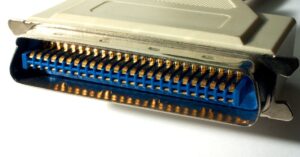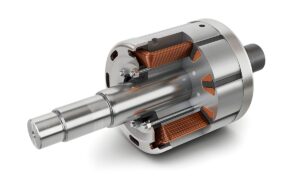Among a wide range of sustainable design options, along with the installation of induction cooktops and electric vehicle chargers, the transition to a clean energy future is increasingly dependent on the electrification of the entire home. At the heart of a home’s power system is the electrical panel, which distributes the home’s electricity to various circuits that power lights, outlets, appliances, and other devices throughout the home.
According to some of the leading Building Products Manufacturers (BPMs), traditional electrical panels, while undeniably effective in distributing energy into the home, are not as sustainable as they could be. To solve this problem, companies like SPAN, Leviton, and Schneider Electric have recently introduced what they believe is a game-changing solution: smart panels.
The technology behind the smart board
Unlike traditional panels, smart panels can intelligently distribute power between different devices to ensure that the panel’s capacity is never exceeded. Smart panels, such as the Leviton Whole Home Energy Monitor, are equipped with built-in or add-on software controls that provide the homeowner with additional information and capabilities beyond the traditional electrical panel.
“The whole-home energy monitor enables features such as turning on/off second-generation smart circuit breakers from anywhere, scheduling breaker activity to take advantage of periods of low power rate and automating the process of shedding unnecessary loads,” says Justin Berghoff, senior director of business development. and product management for Leviton. “All of these activities are easily available from one source, the My Leviton app.”
The whole home energy monitor allows for direct monitoring of alternative energy sources such as solar, battery storage and generators, providing homeowners with insights into their energy consumption and ways to reduce their energy production.

This whole home energy monitor provides precise user controls that go beyond the capabilities of a traditional electrical panel. Photo: Leviton
The SPAN Smart Panel uses prefabricated partitions and installs just like a traditional load panel. According to Karen Goff, vice president of sales at SPAN, it relies on “a combination of in-panel electromechanical current sensors and cloud-based software that allows for seamless home energy management from anywhere using the SPAN Home app for iOS and Android.”
Using the company’s PowerUp technology, the SPAN panel tracks circuit-level energy usage and automatically adjusts home power levels, allowing builders to build all-electric homes without increasing service volume. “During a hot day when the air conditioner is running, SPAN may prioritize the kitchen refrigerator and other essential circuits over the electric vehicle charging circuit,” says Goff. “This means that the vehicle’s charging speed may be reduced to maintain normal performance around the home.”

The SPAN Smart Panel uses electromechanical current sensors and cloud software to provide homeowners with the latest information about their energy consumption. Photo: Span
Likewise, Schneider Electric recently announced the launch of Schneider Home, an energy management solution that allows homeowners to connect and control Schneider Pulse, a 200-amp smart electrical panel designed for retrofits and new construction. The panel also works in conjunction with a Schneider home battery backup, a high-power solar inverter, an EV charger, and connected electrical outlets and light switches. The entire system can be accessed remotely through the Schneider Home mobile app.
Putting the painting into practice
At least as far as Leviton, SPAN and Schneider Electric technologies are concerned, smart panels aren’t just for new homes. Smart load panels can be added to a new or existing home electrical system. Leviton’s fully plug-in circuit breakers design allows homeowners to replace standard circuit breakers with second-generation smart circuit breakers. Additionally, basic and smart circuit breakers can be used interchangeably in a Leviton load center.
Schneider Home is a flexible, modular solution that includes new Square D control relays designed to mount directly to Square D QO neutral load centers, while a Schneider Energy Monitor can be added directly to the panel via a branch circuit at the same time.
“This solution allows builders across the country to add smart panel functionality to new and existing electrical systems without the cost or disruption of a complete replacement of smart panels,” says Ben St. James, director of residential systems offerings at Schneider. “Both devices can be quickly turned on by the installer, allowing the homeowner to easily monitor and control energy usage through the Schneider Home mobile app.”

Schneider Home allows users to track their energy usage through the Schneider Home app. Image: Schneider Electric
Better for homeowners and better for the environment
By allowing homeowners to visualize, control, and fine-tune energy production, the Leviton Whole Home Energy Monitor and Schneider Home System not only reduce utility costs, but also reduce a property’s overall carbon footprint, which accounts for 36% of global emissions in 2020
“On a superficial level, load centers are essential security devices that have seen little or no innovation in decades,” Berghoff says. “The My Leviton app provides a unique opportunity to visualize and make adjustments to homeowners’ most consuming breakers, such as scheduling water heaters, hot tubs or pool pumps when away from the residence or to adjust an individual load such as a single smart outlet or smart switch. Unifying with a charger The electric vehicle also reduces consumer demand for fossil fuels.
Not only can smart panels reduce the carbon footprint of individual households, but they can also, according to Goff, “help improve grid stability by automatically adjusting home energy consumption to avoid overloading the grid.”
Unified energy systems powered by smart panels provide homeowners with the ability to fully customize the electricity their homes generate and consume. As a modular solution, Schneider’s Home Energy Pack allows users to pick and choose the tools needed for their homes, providing a level of flexibility that St. James says will make the benefits of the smart panel accessible to more homeowners.
“Builders are looking for solutions that allow homebuyers to live more sustainably and save money on their electricity bills,” he says. “Many new products are being introduced to the market to achieve this goal; however, they can come at a significant cost or may only be available in some areas. As a modular solution, Schneider Home can also be customized to meet specific needs, eliminating unnecessary parts and significantly reducing costs.” This helps construction companies serve millions of homeowners with smart energy solutions.
Impact on the industry
Not only do smart panels create an opportunity for homeowners to make their existing homes more energy efficient, Berghoff and St. James hope the new technology from Leviton and Schneider Electric, and all truly smart panels, will serve as a baseline for the homes of the future. .
The first step, according to Berghoff, is to address the existing outdated housing stock that contributes to rising global carbon emissions: “The new dawn of electrification has dawned today. Today we have a huge housing stock that needs to be addressed through retrofits, exceeding Just developing new homes.
Hence, St James says it is up to homebuilders to use clean energy solutions in new construction projects to make smart homes not just an increasingly viable opportunity, but the standard for all homebuyers: “We look to the building community to lead the way by incorporating these solutions into “We expect the market to respond positively because we know that sustainability is a focus for homebuyers and they are looking for homes that actually come with these solutions.”



